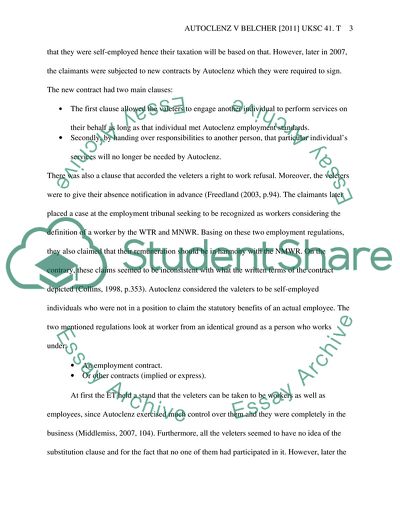Cite this document
(The Decision of the Supreme Court in Autoclenz V. Belcher Case Study, n.d.)
The Decision of the Supreme Court in Autoclenz V. Belcher Case Study. https://studentshare.org/law/1792368-write-a-1500-word-case-note-on-the-decision-of-the-supreme-court-in-autoclenz-v-belcher-2011-uksc-41-t
The Decision of the Supreme Court in Autoclenz V. Belcher Case Study. https://studentshare.org/law/1792368-write-a-1500-word-case-note-on-the-decision-of-the-supreme-court-in-autoclenz-v-belcher-2011-uksc-41-t
(The Decision of the Supreme Court in Autoclenz V. Belcher Case Study)
The Decision of the Supreme Court in Autoclenz V. Belcher Case Study. https://studentshare.org/law/1792368-write-a-1500-word-case-note-on-the-decision-of-the-supreme-court-in-autoclenz-v-belcher-2011-uksc-41-t.
The Decision of the Supreme Court in Autoclenz V. Belcher Case Study. https://studentshare.org/law/1792368-write-a-1500-word-case-note-on-the-decision-of-the-supreme-court-in-autoclenz-v-belcher-2011-uksc-41-t.
“The Decision of the Supreme Court in Autoclenz V. Belcher Case Study”. https://studentshare.org/law/1792368-write-a-1500-word-case-note-on-the-decision-of-the-supreme-court-in-autoclenz-v-belcher-2011-uksc-41-t.


